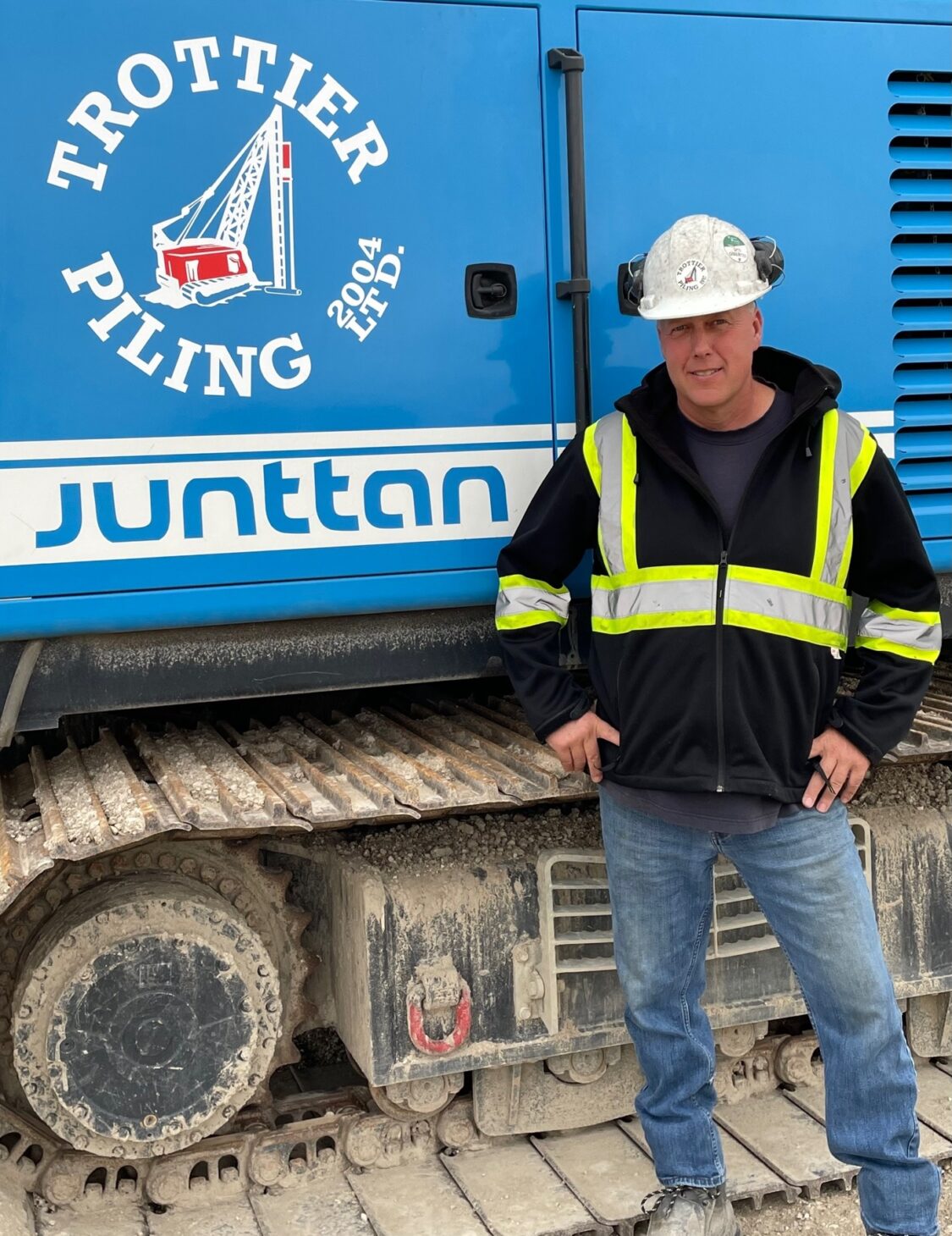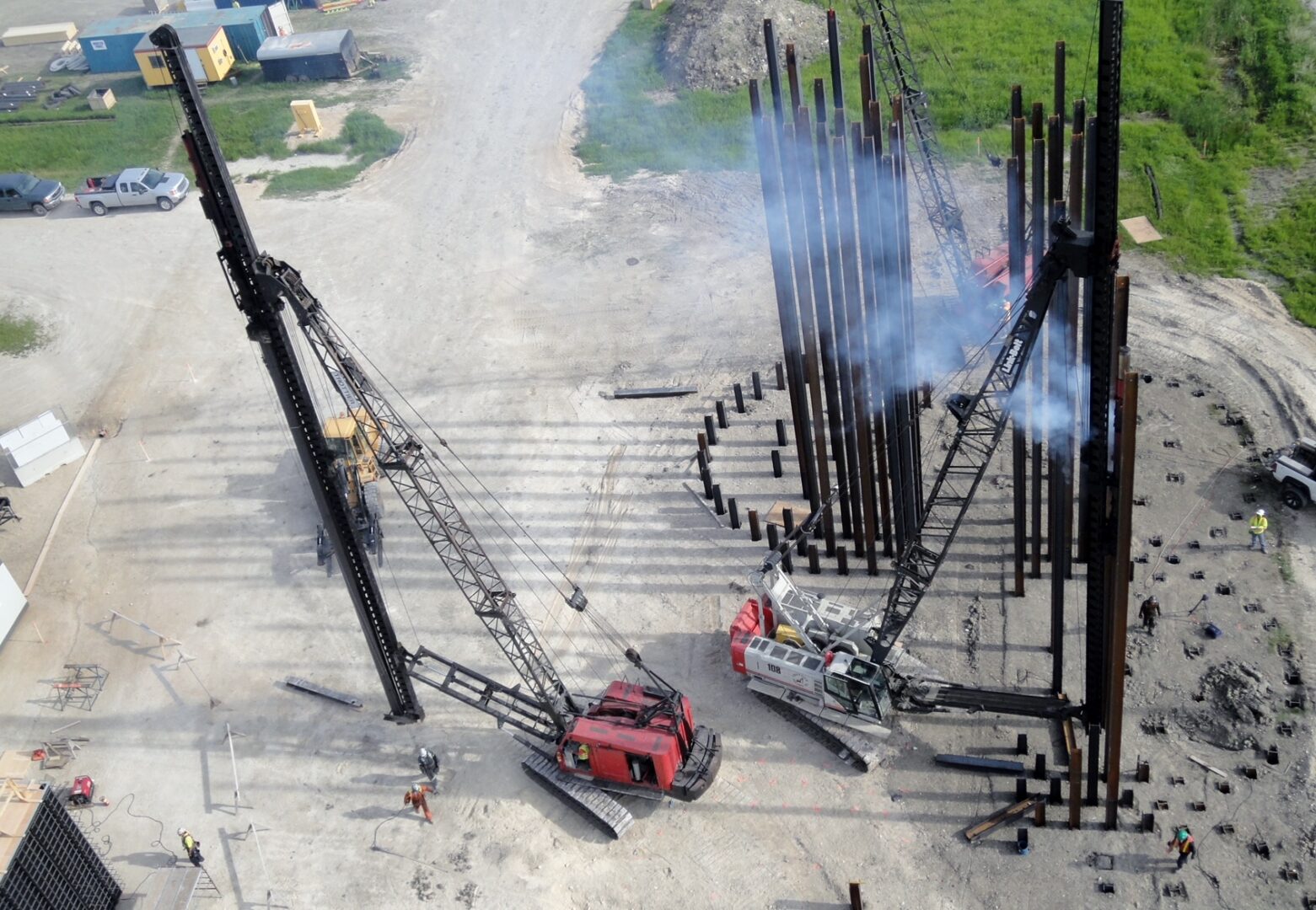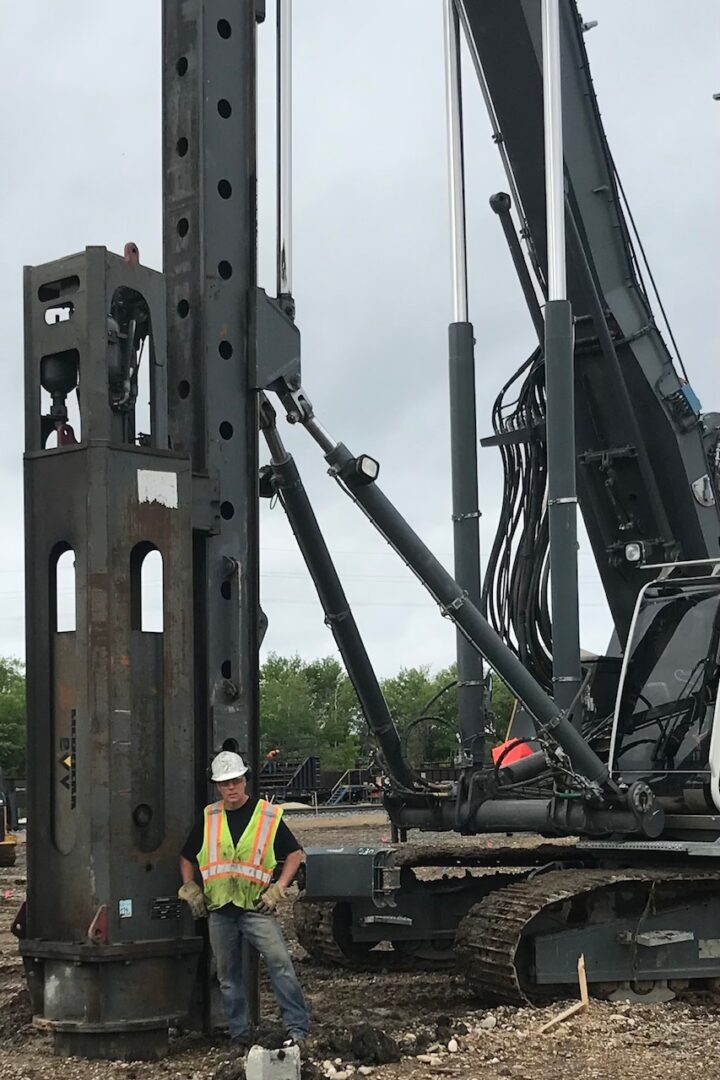
Even though Patrick Browne gets to travel throughout Western Canada for work, it’s not the main reason he likes working in the piling industry.
“I enjoy working in remote areas because of the logistics around working with large equipment in tight timelines and secluded areas,” said Browne, who has worked in the piling industry for more than 30 years. “It’s exciting to beat the ice roads before they close.”
Browne says he always planned on having a career in construction, starting with Western Caissons, an Alberta-owned business in Winnipeg, shortly after high school. “It was 1992. I was 19 years old and just knew it was the field I wanted to make a career in,” he said.
Browne stayed with the company for nearly 22 years, even after it changed ownership to Agra Foundations in 1995. His first position was as a general labourer, and within three years, he earned the role of site foreman. “During my career at Agra, I worked with various forms of piling,” said Browne. From cast-in-place piles and rock-socketed caissons to driven pre-cast piles and steel H- to pipe and timber piles, Browne had the opportunity to hone his expertise in various areas of the piling industry.
“Piling is a very specific industry, and the ability to work with such a variety of equipment and material has helped me to build my skill sets throughout the course of my career,” he said. In 2013, Browne moved to Trottier Piling, enjoying the family-owned and operated aspects of the business, which differed from Agra Foundations. “I liked working with a large company and I learned a lot from Agra,” said Browne. “But the smaller aspects of Trottier Piling really appealed to me.”

Now located in Grande Pointe, Man., Terry Trottier founded the company in 1974 before stepping down in 2004. Terry’s son, Joey Trottier, purchased the business and renamed the company to Trottier Piling Ltd. Browne describes Joey as a very present and personable owner.
“As a site superintendent, I like working and collaborating with him,” he said. “Trottier Piling is a great work environment with skilled people who hold the same commitment and goals as I do on the job.” Browne says construction workers install piles in all types of environments, from undeveloped land to wide, open areas to tight, confined spaces.
When he can’t travel to secluded destinations in Western Canada, he appreciates the similar characteristics that downtown Winnipeg offers the piling industry. “Larger projects in the downtown area are challenging and fun,” he said. “A lot more coordination is involved, and the whole logistics of bringing equipment downtown and working in tight, congested areas is very appealing.” Browne says it’s been amazing to see Winnipeg’s downtown area expand, including the construction of high-rises, which now make up the city’s skyline.
“It takes a little more planning to complete those projects, and you use all your previous experience and knowledge to complete the work,” he said. “Moving larger equipment to some jobsites has had to be conducted after midnight with the assistance of police services as escorts. This process takes careful planning from everyone involved in the move.”
Browne says he finds it helpful to keep records of the projects he has worked on throughout his career. “You often rely on previous experiences when determining how to approach a new project,” he said. “Knowing the ground conditions in advance helps to make appropriate decisions when selecting the type of piling equipment and tooling to ensure the job runs smoothly.”
“The piling industry is the foundations of our infrastructure. Wherever it goes, we go.”
Patrick Browne, Trottier Piling
One aspect of the industry he says has evolved is the advancement of hydraulic piling equipment, a modern piling hammer shaped like a corkscrew. Browne says the equipment is more operator friendly and easier to train younger workers on.
“It has definitely increased on-site productivity compared to the equipment we first started working with,” he said. “With the old equipment, you had to be very mechanically inclined to not only operate them, but also repair them.” Browne says the new equipment on-site has also allowed for more capabilities and capacities when it comes to piling. “We can increase the capacity of the piles,” he said. “So when they design the projects, they can maximize the capacity of the piles.”
While repairing pilling equipment is no longer a mandatory part of the job, Browne says a strong dedication and understanding of the work still matter. “Don’t be afraid to learn,” he said. “Learn the new piling, ask lots of questions – and have a tolerance for extreme weathers, not just the cold, but the hot summers as well.”
Browne also notes the changes in safety that have occurred over the years. He remembers when workers were sent down the shafts to bail the caissons by hand, sending the mud to the top using a pail. “Drilling equipment has replaced the majority of manual labour, and cameras have removed the risk from workers because of their inspection and monitoring systems,” he said. “I believe it’s very important to take the time to train workers so they have a clear understanding of the job and how to conduct their tasks safely.”
Browne says he looks forward to going home to his family at the end of the day and wants to ensure that his workers can do the same thing. “I enjoy being the self-described old guy on site,” said Browne. “I’ve learned from very experienced people in this industry, and I like that I can pass that knowledge onto the younger or newer workers.”

Browne says he wants the younger generation to have the same excitement for the industry as he did. “I don’t see many younger people viewing piling as a career path like I did when I was a teenager.”
At this time, Browne says outreach is essential, but educating younger people on the opportunities within trades remains critical. “I think that can help draw them in,” he said. “But also to understand that working in piling is more than just working on a construction site.”
One of Browne’s local and most memorable experiences was working on the Red River Floodway Expansion Project, that saw all the bridges lengthened and raised to accommodate the expanded floodway, which acts as a water diversion to protect Winnipeg from seasonal flooding.
“The expansion included improvements to the railway and highway bridges,” said Browne. “This required the installation of pre-cast concrete, steel H-piles and sheet piling for cofferdams. The piling for the project began in 2005, and we completed it in stages, ending in 2010.”
While Browne is proud to have been part of such an immensely challenging, massive and rewarding project, he still prefers to work in areas that require outside-the-box thinking and planning to complete. “We have worked in nickel, gold and potash mines, and industrial and gas pipelines,” said Browne. “The piling industry is the foundation of our infrastructure. Wherever it goes, we go.”
As for the future, Browne sees many more years ahead of him in the piling industry. “I don’t see myself ever changing my career path,” he said. “I’ve been a supervisor for over 25 years now, and I still love what I do. So, as long as the body is willing, I will still be piling.”